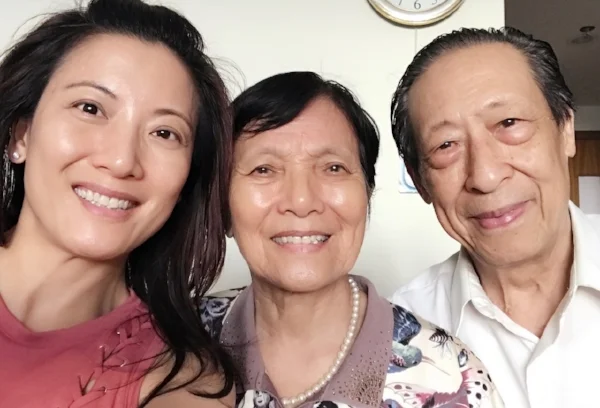Visiting my parents in China (who are 84) every year around Christmas has been a tradition for more than 10 years. There are a few sound reasons why it is not a convenient time for me to visit this year, and I had (at least I thought) justified to myself that it was OK to postpone the trip.
"That's OK, we understand. You do what you need to do. We are here when you come." says my compassionate and positive Mom.
My parents have always supported my decisions throughout my life. When I came across the opportunity to come to the US for higher education after college, any slightest detectable hesitation in my Mom's voice would have stopped me from accepting the amazing full scholarship. Her words were, "Though we don't have a lot of money, we can always afford a return flight if you don't like it there in the U.S.". That was 22 amazing years ago.
Over the Thanksgiving holiday last weekend, I found myself murmuring to my husband, twice, "I think my parents are disappointed that I am not visiting this year..."
Something in my core was telling me that I was not congruent with the trip postponement decision.
Upon late-night reflection, I decided to book a flight and just arrived in Shenzhen last night. The smiles and glow on my parents face said so much. A sense of calmness and joy at the gut level validates my latest decision making, as I experience the alignment between my thoughts, emotions, actions, and language (words) - which is the definition of "authenticity" to me.
What comes to mind, besides honoring our intuition and authenticity, is Stephen Covey's Urgent-vs-Important Time Management Matrix (which is also a great tool for prioritization and decision making), as illustrated in the image below.
Concept: Stephen Covey's Time Management Matrix
Within this 4-quadrant matrix, Quadrant 1 is "Urgent and Important" and issues typically get addressed, Quadrant 4 is "Not Urgent and Not Important" and hopefully eliminated completely. The tricky part is that people tend to spend too much time on Quadrant 3 ("Urgent and Not Important") and not enough time on Quadrant 2 ("Not Urgent but Important").
I have labeled the approaches for Quadrant 1-4 as the "Manage - Intentional Focus - Minimize - Eliminate" approach, or the "MIME" approach for ease of memory.
In this situation of deciding on the family visit, for several days I was forgetting how important it is for me to honor family and to live with no regrets - part of my core values. I was not allocating sufficient priority to Quadrant 2.
I am grateful to the intuition that guided me on prioritization and decision making. I am grateful to my husband, who listened to my language, emotions, and values, and reflected it back to me to shed light. He was being a great coach without realizing it.
For both work and life, what's in Your Quadrant 2?



